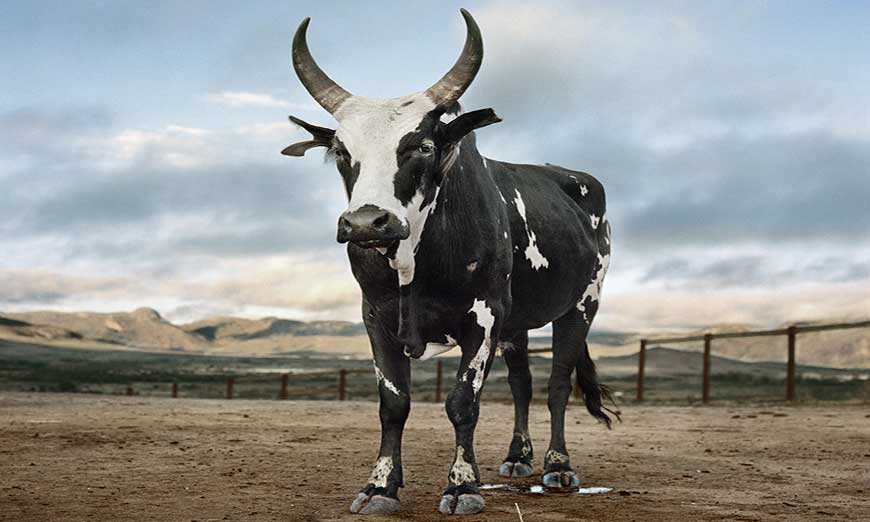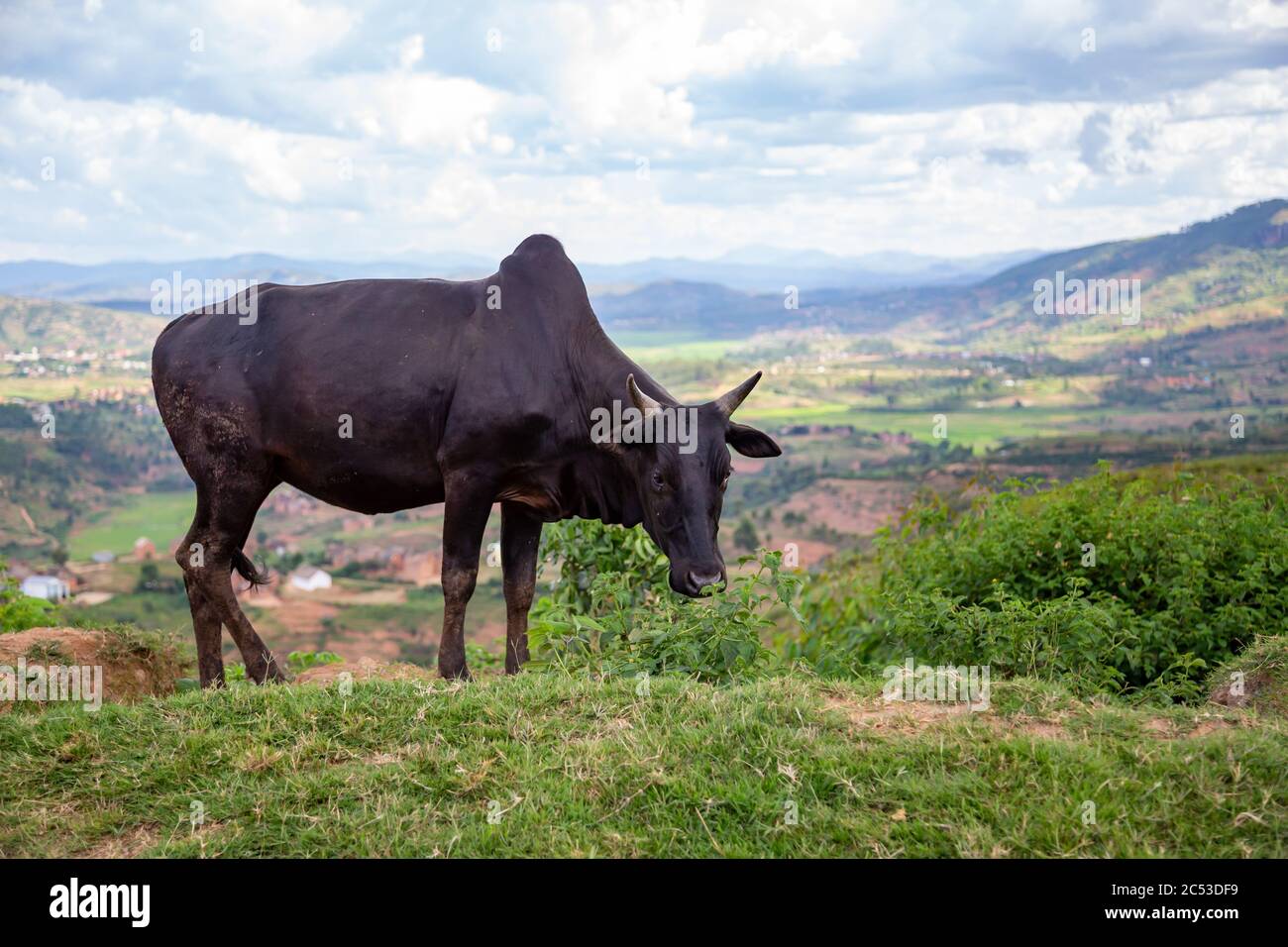
Le zébu de Madagascar symbole de puissance et de fortune
In Madagascar's bustling capital, Antananarivo, zebu gain right-of-way ahead of cars and rattling Citroën taxis, while in upscale restaurants and street-side joints, hungry patrons savor sizzling zebu steaks. But despite their prominence, zebu herds have dwindled from 23 million in the early 1980s to about 6 million today.

Zebu Stock Photo Download Image Now Zebu Cattle, 2015, Agriculture
Sacred beasts. A zebu - a type of humped cow - is precious, sacrosanct even, and integral to the tribe's economy. The Bara live in the south west of the island in a region known for its wide.

Madagascar Daniel Naude
The Madagascar Zebu is a tri-purpose breed, kept for meat, milk and work. The breed has lyre-shaped horns and is found in many colors. They are one of the breeds used in the development of the Rana and Renitelo breeds. References Mason, I.L. 1996. A World Dictionary of Livestock Breeds, Types and Varieties. Fourth Edition.

Zebu Cattle Madagascar Stock Photo Download Image Now iStock
Zebu is the most commonly eaten meat in Madagascar. Almost every part of the animal can be eaten. Kebabs or strips of dried meat, in particular, are sold in the streets. The zebu's hump is reportedly the best piece of meat in the world, with a similar taste to caviar or truffles.

Zebu 8. Ihosy district, Ihorombe, Madagascar, 2013 Madagascar
At the center of the discord is Madagascar's cherished cattle breed: the zebu. In 2018, IFC, the arm of the World Bank that invests in the private sector, approved a $7 million investment in Bonne Viande de Madagascar (BoViMa).

Zebu Cattle in the Pasture on the Island of Madagascar Stock Image
At the dawn of Madagascar's independence in 1960, political entrepreneurs harnessed the enduring significance of Malagasy cattle, known as zebu , and declared them integral to the new.

Zebu Cows On Island Image & Photo (Free Trial) Bigstock
The Zebu (Bos taurus indicus) is a bovid better known under the name of humpback ox and called by the local Malagasy population "Omby". It is a domestic bovid descended from an Indian subspecies of the aurochs. The word zebu comes from the Tibetan "Zeba" etymologically meaning "bump".

Zebu African Cattle Livestock Cattle
Zebu cattle have long symbolized power and prosperity in Madagascar--but despite their cultural significance, zebu herds are dwindling and the quality of the.

Zebu 12. Antananarivo, Analamanga, Madagascar, 2013 Madagascar
Characteristics Female zebu in Sri Lanka Zebu, but also many Sanga cattle have humps on the shoulders, large dewlaps and droopy ears. [19] Sanga cattle can be distinguished from purebred zebu by their having smaller humps located farther forward. [citation needed]

Zebu Cattle in the Pasture on the Island of Madagascar Stock Photo
Madagascar Zebu Cattle - Everything You Need To Know

The Zebu cattle in the pasture on the island of Madagascar Stock Photo
In Madagascar's bustling capital, Antananarivo, zebu gain right-of-way ahead of cars and rattling Citroën taxis, while in upscale restaurants and street-side joints, hungry patrons savor sizzling zebu steaks. Healthy cattle, healthy industry Beefing up the zebu for export will be no easy task.

Herd of Zebu Cattle in Madagascar. Stock Image Image of reserve, herd
The Zebu is a breed of domestic cow from Asia, which has been domesticated since 3,000 B.C. Today, there are about 75 breeds, evenly divided between those living in Asia and those living in Africa. Zebu are used as draft animals, and are farmed as both dairy and beef cattle.

Daniel Naude Zebu 2. Cattle market, Ambalavao, Haute Matsiatra
Study context. The dominant cattle species in Madagascar is Bos taurus indica, or zebu.In 2020, the country had an estimated 9 million head of cattle, a figure that likely underestimates the actual numbers (FAO Citation 2021).For many Malagasy, cattle are valued primarily as signifiers of social status and for use in ritual sacrifices for funerals and other life cycle ceremonies, and only.

Madagascar Daniel Naude
The zebu is one of the symbols of Madagascar. It belongs to the same family as European cattle, but has its origins in tropical Asia, which is why it is much better adapted to tropical temperatures. It is a medium-sized cow with small head and ears, short and smooth fur and can have different colors: black, red, brown and gray.

Madagaskars heimliches Wahrzeichen Das Zebu MadaMag
Madagascar(1960s-1970s),whereMalagasyelites,Frenchtechnicalexperts,diplomats, investors, and cattle ranchers all probed the dynamically unfolding potential of the island. By following zebu—from pastures to experimental stations, ranches and feedlots, marketplaces and abattoirs, canning factories and dining tables—I explore

Zebu Cattle in the Pasture on the Island of Madagascar Stock Image
Investigating the twinned history of Madagascar's beef exportation and cattle modernization plans reveals how cattle were enlisted in the project of nation-making and a crucial moment of possibility, in which state-crafters ambitiously pursued a path toward self-determination while navigating oscillating geopolitics and asymmetrical global econo.